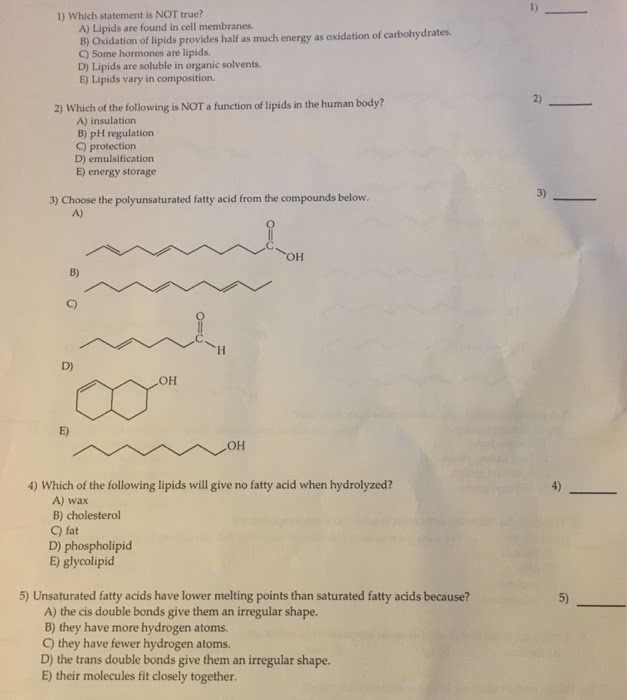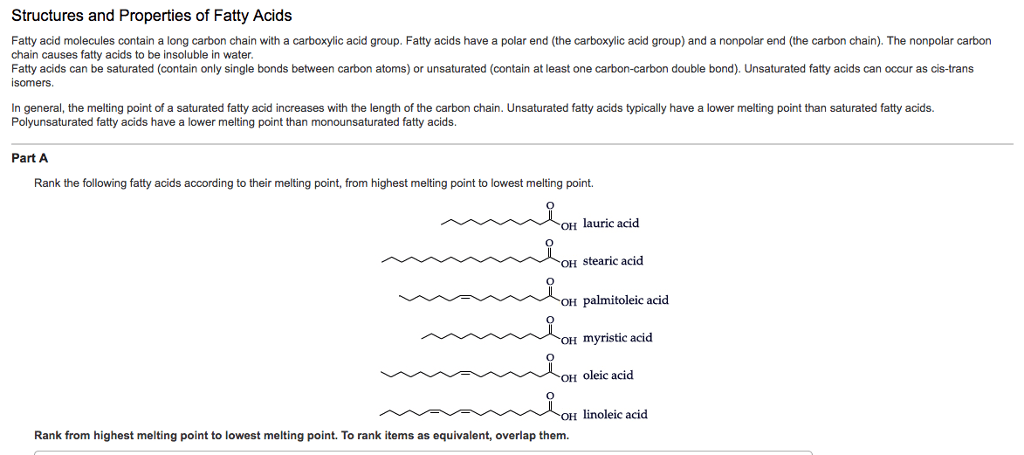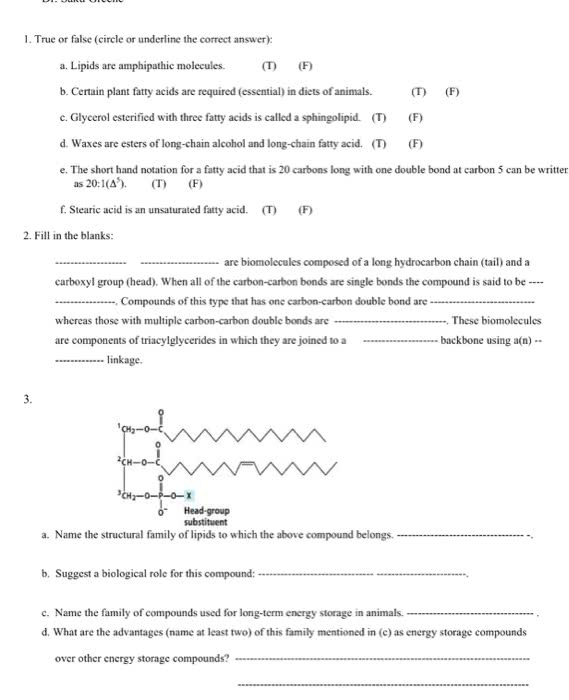Biochemistry 2280A Lecture Notes - Lecture 6: Glycerophospholipid, Glycerol, Biological Membrane

Topic 6: Lipids and Membranes
Lipids: A iologial oleule that is’t solule i ater, ut is solule i orgai solets.
- Lipids are structural components of biological membranes but also function as energy storage
molecules, enzyme cofactors, signalling molecules, and pigments.
Classes of Lipids
1. Fatty Acids Energy and Structure
- Hydrocarbon Chains ending in a Carboxylic Group
- Chain usually contain an even number of carbon atoms that range in length from 4-36 carbons
- Fatty Acid w/no double bonds = Saturated
- Fatty Acid w/one double bond = Monounsaturated
- Fatty Acid w/more than one double bond = Polyunsaturated
- Unsaturated Double Bonds can be cis (kinked) or trans (straight). They are usually cis as trans double
bonds rarely occur in nature.
- Carbons are counted from the carbon in the -COOH group
- First double bond is on C9 and is usually cis. Subsequent double bonds are added every 3rd carbon
2. Triacylglycerols Used to Store Fatty Acids in Adipose Tissue
- 3 Fatty Acids + Glycerol.
- Each fatty acid group is bonded to the glycerol molecule via condensation reaction through which
results in ester groups.
3. Glycerophospholipids In Membranes (b/c it has both non-polar and polar groups)
- 2 Fatty Acids + Phosphate group (w/different polar groups) + Glycerol Backbone
find more resources at oneclass.com
find more resources at oneclass.com

4. Sphingolipids In Membranes (b/c it has both non-polar and polar groups)
- Based on sphingosine, not glycerol
- If a fatty acid is attached to the N of sphingosine via an amide linkage, the molecules is a ceramide
Sphingosine contains a trans double bond
(fatty acids tend not to have trans double bonds,
this is not a fatty acid)
5. Steroids often hormones (testosterone, estradiol, etc.) and can be in membrane (cholesterol)
6. Other Lipids If the molecule is pretty non-polar, ad does’t fit ito the other groups, it’s an
other lipid
Ceramide are a class of sphingolipids that vary in the
length of the fatty acid chain and degree of saturation
- Adding a polar group (like choline) to Ceramide to third
group instead of the –OH which makes a sphingomyelin
- Non-polar groups (fatty acids) + Polar heads make
sphingolipids suitable for membranes
- Steroids are characterized by 4 carbon rings that are almost planar
(3 six-membered rings and 1 five-eered rig fused together
- Most of the molecule is non-polar, so it’s still ot er solule
(even though it has polar groups)
find more resources at oneclass.com
find more resources at oneclass.com
Document Summary
Lipids: a(cid:374)(cid:455) (cid:271)iologi(cid:272)al (cid:373)ole(cid:272)ule that is(cid:374)"t solu(cid:271)le i(cid:374) (cid:449)ater, (cid:271)ut is solu(cid:271)le i(cid:374) orga(cid:374)i(cid:272) sol(cid:448)e(cid:374)ts. Lipids are structural components of biological membranes but also function as energy storage molecules, enzyme cofactors, signalling molecules, and pigments. Classes of lipids: fatty acids energy and structure. Hydrocarbon chains ending in a carboxylic group. Chain usually contain an even number of carbon atoms that range in length from 4-36 carbons. Fatty acid w/no double bonds = saturated. Fatty acid w/one double bond = monounsaturated. Fatty acid w/more than one double bond = polyunsaturated. Unsaturated double bonds can be cis (kinked) or trans (straight). They are usually cis as trans double bonds rarely occur in nature. Carbons are counted from the carbon in the -cooh group. First double bond is on c9 and is usually cis. Subsequent double bonds are added every 3rd carbon: triacylglycerols used to store fatty acids in adipose tissue.




